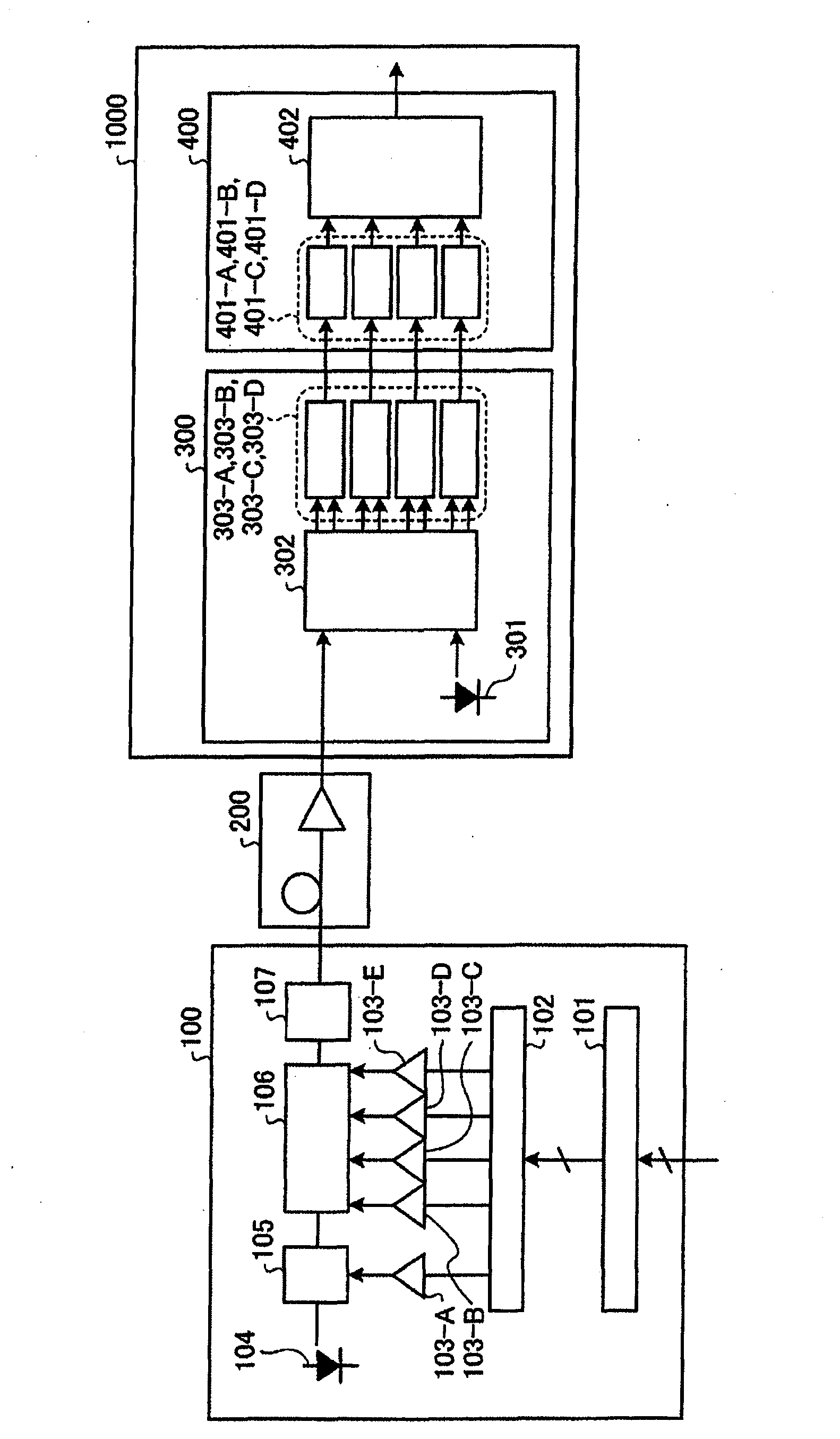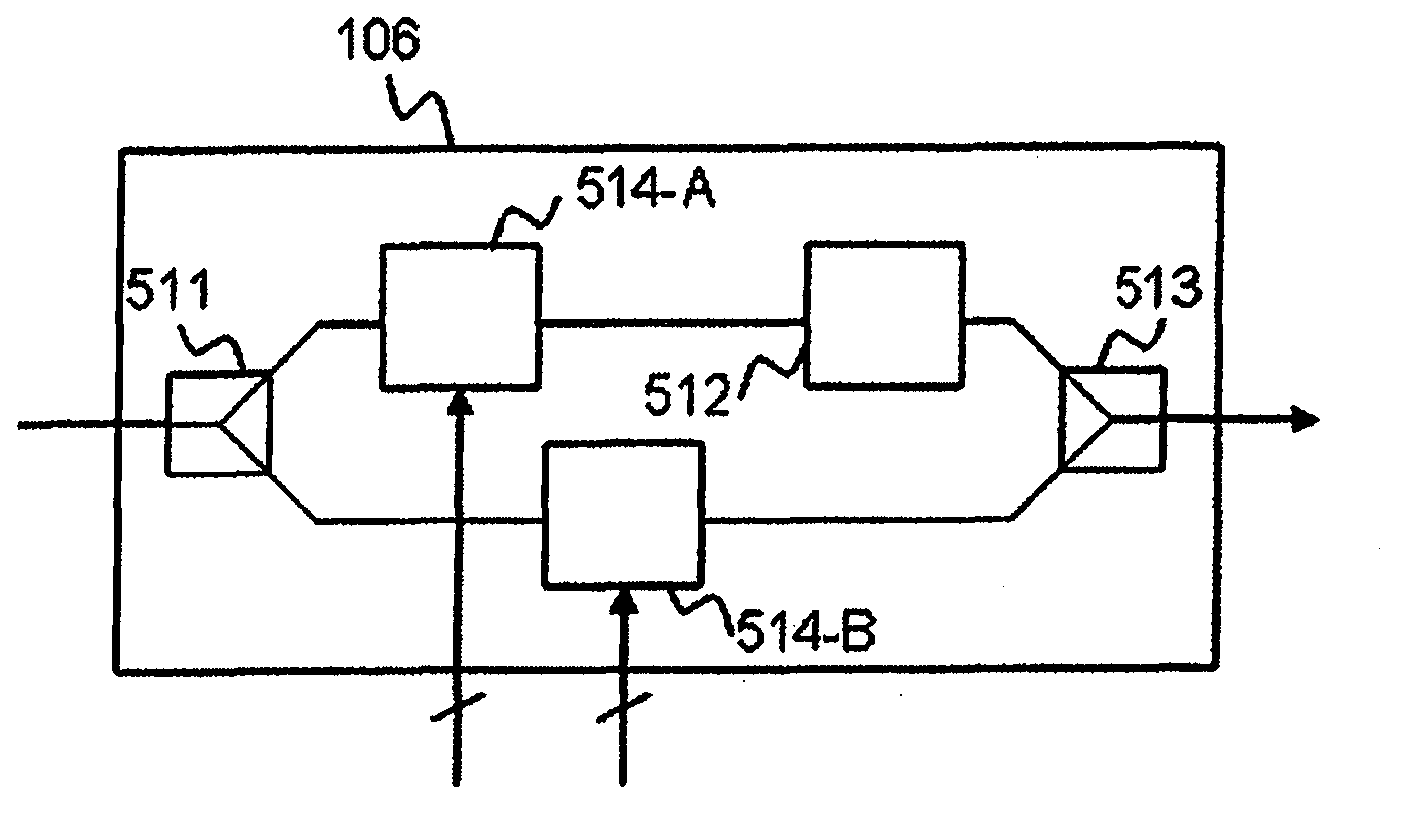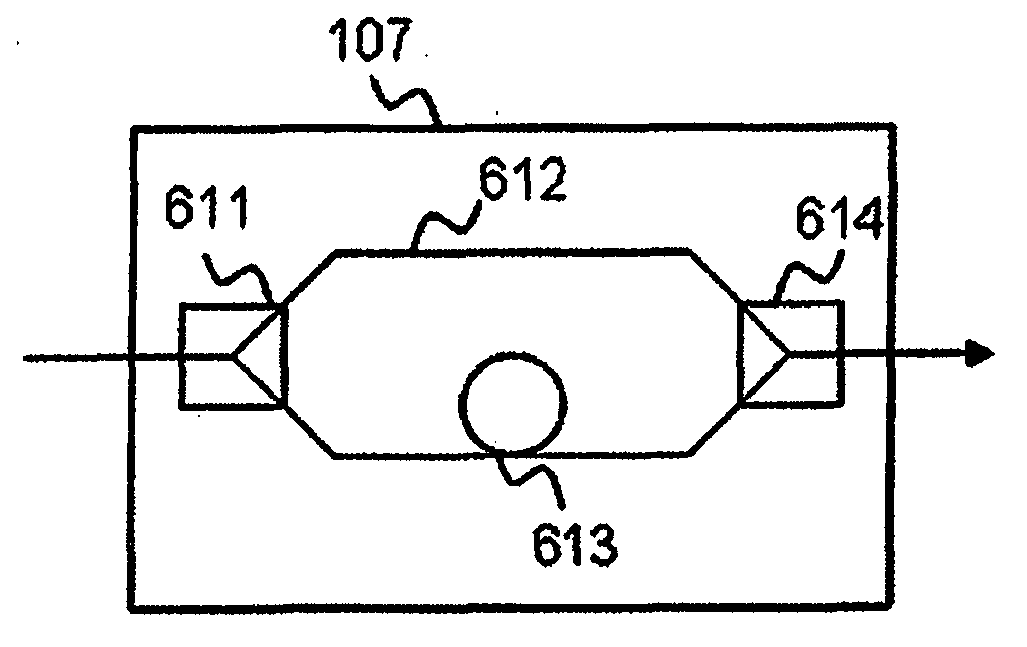Optical transport system, optical transmitter device and optical receiver device
An optical transmission and optical transmission technology, applied in the field of optical transmission systems, can solve problems such as unbalanced, excessive signal quality degradation, and achieve the effect of reducing nonlinear interference and improving transmission quality
- Summary
- Abstract
- Description
- Claims
- Application Information
AI Technical Summary
Problems solved by technology
Method used
Image
Examples
Embodiment approach 1
[0040] figure 1 It is a figure which shows the structural example of the optical transmission system of this embodiment. Such as figure 1 As shown, the optical transmission system of this embodiment includes an optical transmission unit (optical transmission device) 100 , an optical transmission unit 200 , and an optical reception device 1000 . The light receiving device 1000 includes a light receiving unit 300 and a received electrical signal processing unit 400 . The same applies to the optical transmission system described in the following embodiments. The optical signal sent from the optical transmission unit 100 reaches the light reception unit 300 via the optical transmission unit 200 . The received optical signal is converted into an electrical signal by the light receiving unit 300 and then electrically processed by the received electrical signal processing unit 400 .
[0041] The optical transmission unit 100 includes a first electrical signal source 101, a seco...
Embodiment approach 2
[0132] In the present embodiment, a CSRZ (Carrier Suppressed Return to Zero) modulation is used for the pulse modulation in the first embodiment described above.
[0133] Figure 13 It is a figure which shows the structural example of the optical transmission system of this embodiment. For those with Embodiment 1 figure 1 The structures with the same functions are attached with the same symbols, and repeated explanations are omitted. The optical transmission system of this embodiment includes an optical transmission unit (optical transmission device) 800 , an optical transmission unit 200 , and an optical reception device 1000 . As shown in the figure, the optical transmission unit 800 includes a first electrical signal source 801, a second electrical signal source 802, electrical amplifiers 803-A, 803-B, 803-C, 803-D, a light source 804, and a Mach-Zehnder modulation device 805. The functions of the light transmitting unit 200 , the light receiving unit 300 , and the rec...
PUM
 Login to View More
Login to View More Abstract
Description
Claims
Application Information
 Login to View More
Login to View More - R&D
- Intellectual Property
- Life Sciences
- Materials
- Tech Scout
- Unparalleled Data Quality
- Higher Quality Content
- 60% Fewer Hallucinations
Browse by: Latest US Patents, China's latest patents, Technical Efficacy Thesaurus, Application Domain, Technology Topic, Popular Technical Reports.
© 2025 PatSnap. All rights reserved.Legal|Privacy policy|Modern Slavery Act Transparency Statement|Sitemap|About US| Contact US: help@patsnap.com



